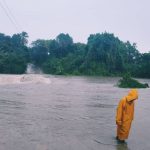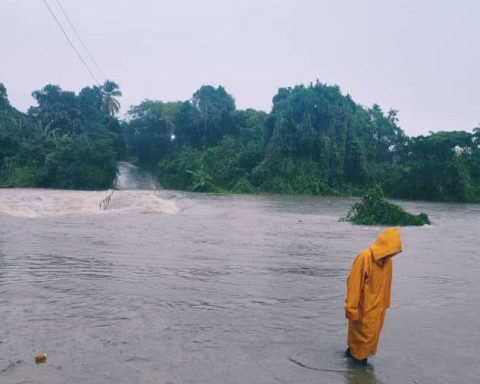The videogame The Last of Us (Naughty Dog, 2013) has marked many milestones in the ten years that have passed since its release. One of them has been to use the scenarios to enhance the message of the story.
Here, the stage work transcends the aesthetic and playful to become a instrument within the conflict of history.
The game plan and the story
The game places us in 2033. We are in a post apocalyptic world caused by an infectious fungal outbreak Cordyceps that generates mutations in humans. It alters your ability to control and will; transforms them into violent and dangerous creatures, similar to the zombie. Set in the United States, we are presented with a militarized and violent society, with human groups in decline and in permanent struggle for the scarce resources that remain.
In narrative terms, the game is a critical dystopia. A type of utopian story in which the past is negative and decadent. As a consequence of it, the present is chaotic and in decline, but there is hope for the future in the form of a solution, a utopia.
At the beginning a possible cure emerges and, therefore, a remedy for society: Ellie, a 14-year-old girl, has been bitten and does not develop the transformation: she is immune. As Joel, we must guide her to the scientific team that will be able to find her cure.
The message: naturalism and environmentalism
Complementary to the arc of the characters, the game raises a naturalist message, which various authors have defined as neoecologist.
Contemporary society is characterized by the artificial and subdues nature, reaching its maximum expression in the city. The overwhelming urban growth depletes resources and the planet responds with an incurable disease for humanity, responsible for everything.
With the infection underway, society self-destructs and nature begins to retake control of the territory. The terms are inverted, the natural grows and occupies spaces while the human being progressively reduces his capacity to live on Earth.
This message is common within the dystopian genre, with references such as I’m legend either Road. The game proposes that only a return to natural values can redeem society, which will not survive on current terms. This message is communicated in a variety of ways, with stage design being an obvious tool.
Nature and the city: thesis and antithesis
Naturalism is articulated essentially by contrasting opposites, using the city as a simile of human society against nature, the artificial against the natural: death/life, fire/water and darkness/light.
In the cities we find permanent references to the death. We cross a multitude of common spaces: office blocks, shopping malls, hotels, hospitals, public buildings, suburbs, residential neighborhoods, etc. In all of them we find vestiges of the past as a reflection of a previous way of life. The first approach is nostalgic –Ellie wants to know what the world was like before the outbreak–, but there is an underlying criticism of the urban way of life by exposing its fragility in the face of the crisis.
The urban world is decadent, imprisons the individual and brings suffering. In the game, cities do not offer freedom of movement, they are dangerous mazes with only one direction and permanent obstacles. In them, the only threat is the human being himself, both those transformed by the infection and the survivors, who are especially cruel.
These artificial spaces are contrasted with natural spaces, both in the open and within the cities themselves. In nature we find peace and tranquility, they are luminous areas and the sensory stimuli invite relaxation. We can explore them with greater freedom of movement. Birds are heard and animals are seen: there is life.
The Last of Us raises an opposition between a dystopia (antithesis) and utopia (thesis), which is environmentalism.
The message in the scenarios is built through opposition of concepts. Fire is a constant, present in cities as a symbol of change and renewal, but also as a spatial landmark: it blocks the way and signals danger. Where there is fire there is change of direction, tension and threat.
Its opposite is water. In nature it occurs in the form of streams and small courses of crystal clear water that provide tranquility, as opposed to the stagnant and decomposing water of the cities that must be crossed.
The use of light also responds to this logic. The cities are dark, the light hardly reaches the streets and buildings, without power or electricity.
The low lighting is used as a guide for the itinerary of each chapter. The path to follow is always marked by a luminous point on the horizon, where there is also always a natural element as a milestone to emphasize the goal. The city is dangerous and nature is safe, the light guides us to get out of the cities.
movement and travel
Movement and travel are elements that significantly reinforce the naturalist message.both in the configuration of each chapter and within the narrative scheme.
The prologue begins in Austin, a land south of the border. There we see for the first time the infectious outbreak and its immediate consequences. The elements that will be constant throughout the story are shown in sequence: the trigger marked by an explosion in the urban center, the insecure residential areas, the absence of refuge in the city, the fire to guide the path and the inexorable departure towards the natural, with the destructive character of the human being as confirmation of the disaster.
From there we move to Boston, which symbolizes American independence and whose history is linked to the founding moments of the nation (with a narrative climax between the History Museum and City Hall). From Boston, the journey continues west: Wyoming, Colorado, and Utah. The route reproduces the colonization of the country, but in this case symbolizing an inverse process: verifying the disappearance of a nation, and not its construction.
Within the narrative, each chapter represents a marked itinerary that we cannot alter, from a starting point to the end, overcoming the game challenges. These routes are intricate, labyrinthine; they involve going in and out of buildings, often through broken windows and ladders, diving and traversing stagnant water, going down into basements and up skyscrapers, on routes that often include traversing downtown. The closer to the center, the greater the danger and the greater emphasis on the negative values of the city.
It symbolizes a tortuous urban life. There are greater traces of the barbarism of the human being and it is more difficult to reach the climax of each chapter in residential spaces, on the outskirts, similar to the one in Joel’s house at the beginning in 2013: it is a continuous return to the starting problem.
On the other hand, in the parts in which Joel and Ellie meet nature, the itinerary is more open, we can decide the trajectory to cross that space. The message could not be more evident: the human being is free in nature, while in the city he is imprisoned by his obstacles and obstacles.
Just before the ending –Salt Lake City– the game presents us with the dilemma between living in nature or returning to the city when they find a rural settlement in Jackson, where some settlers have created a new way of life in balance with the environment. .
This is where the journey and the places are adapted to the message again to create a symbology that reinforces the conflict of the characters.
Now that the adaptation as a series has arrived, we will be able to check if this message and these resources are maintained. The fact that Neil Druckmann, the game’s original developer, is in charge of the audiovisual project together with Craig Mazin, who he already introduced in his previous series (Chernobyl2019, HBO) aspects similar to these, suggest that it will be so.
Hector S. Martinez Sanchez-MateosFull Professor of Human Geography, Castilla-La Mancha university
This article was originally published on The Conversation. read the original.












